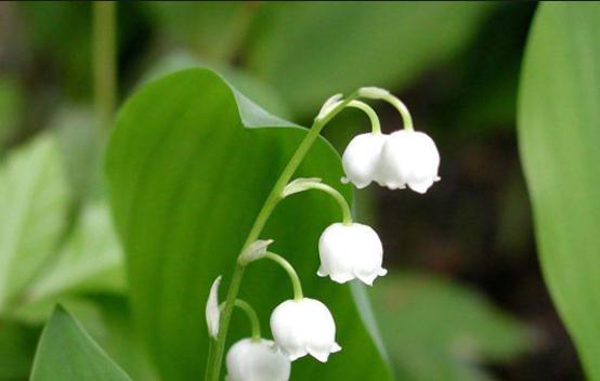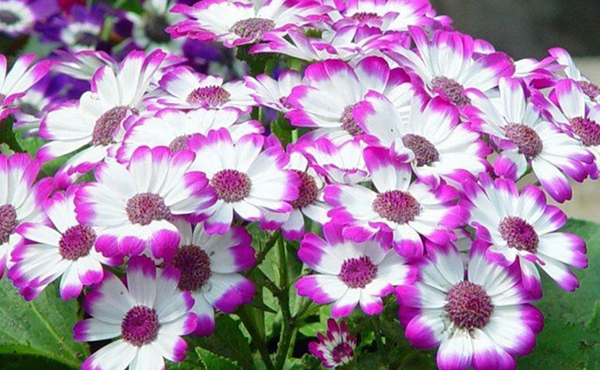Culture method of reticulate grass

The best propagation time: under the condition of suitable temperature, the grass can be propagated by cutting in the whole year, and the cutting effect is the best when the temperature is slightly higher from May to September.
The best growth soil: reticulate grass growth soil production, you can first put 2 cm thick coarse-grained matrix or ceramsite as a filter layer, and then sprinkle a layer of fully mature organic fertilizer as base fertilizer, the thickness is about 1: 2 cm, and then covered with paddy soil, pond mud, rotten leaf soil, you can also use vegetable garden soil: slag = 3:1 or garden soil: medium coarse river sand: sawdust (slag) = 4:1:2 mixed soil.
Growth humidity requirements: reticulate grass should be more humid environment, the growing period needs higher air humidity, especially in summer high temperature season, water evaporation is large, the air is dry, in addition to watering to increase the humidity of basin soil, foliar spraying and ground sprinkling are more necessary. Keeping high air humidity is beneficial to the growth of stems and leaves of Rabdosia paniculata. But the drainage of the basin soil should be good, the water cannot be accumulated, and the leaves can not be soaked in the water fog for a long time, otherwise the color and luster of the leaves will turn white, which can easily cause shedding and decay. But in winter or rainy days, the basin soil can be slightly drier and the air humidity can be moderate.
The optimum growth temperature is 18-25 ℃, and the best growth temperature is 18-25 ℃. The leaves will suffer chilling injury when the air temperature is lower than 12 ℃, and the plants may die when the temperature is below 12 ℃.
The best growth light: reticulate grass prefer medium intensity light, avoid direct sunlight, but also have strong shade tolerance. It's best to put it by a bright window indoors.
Culture methods and matters needing attention of Rabdosia mandshurica
The white grass plant is small and exquisite, the leaf color is light and elegant, the texture is symmetrical, it is a very good small potted plant. Then how to raise white rinse grass? What do you need to pay attention to in breeding? Let's learn about it next.
First, the culture method of white net grass.
1. Soil: White reticulate grass potted soil is suitable for sandy loam soil rich in humus, and can also be prepared with peat soil or coconut 50%, pond mud 30%, river sand 20%, or loose and water-retaining grass carbon nutrient soil. Because its root system is shallow, it is better to use a large mouth and shallow basin instead of a high and deep basin for planting.
2. Illumination: White reticulate grass should not be exposed to the hot sun in summer, but it needs to grow in the suitable sunlight. Therefore, there should be 6 hours of scattered light at 4m / h every day. If the indoor light is insufficient, the pot plant can be placed under the fluorescent lamp at night to increase the light hours to ensure the plant's demand for weak light.
3. Temperature: the most suitable growth temperature of Rabdosia paniculata is 18 ℃-30 ℃. Avoid cold frost. The overwintering temperature needs to be kept above 10 ℃ in cold winter. When the temperature drops below 4 ℃ in winter, it will go into dormancy. If the ambient temperature is close to 0 ℃, it will die of frostbite.
4. Watering: White net grass watering should grasp the principle of "rather wet than dry", but do not accumulate water. Usually should keep the soil moist, winter cold current attack should pay attention to heat preservation and windbreak, reduce the amount of water. Watering in the morning is better to avoid the retention of water in the leaves at night, resulting in cold injury and decay.
5. Fertilization: White net grass can grow well without fertilization. Granular compound fertilizer or rarefied liquid fertilizer can be applied every 1-2 months, which can brighten the color and luster of leaves. Attention should be paid to avoid fertilizer contact with leaves. In order to maintain the beautiful shape of the plant, the newly planted potted seedlings should be heart-picked many times to promote multi-branching.
II. Matters needing attention in the cultivation of White net Grass
The common diseases and insect pests of white net grass are cabbage insects, aphids, red spiders, anthracnose, leaf blight and so on. 40% omethoate EC 1000Mel 1500 times liquid can be used to control insect pests, and 50% carbendazim wettable powder 1000 times solution can be used to control diseases. White reticulate grass leaves are vulnerable to the harm of rat women and snails and holes appear. In addition, if the sun is too strong, holes will also appear in the leaves.
The above is the introduction of the breeding methods and matters needing attention. I hope it will be helpful to you. White grass is very popular all over the world and is one of the most popular indoor plants.
White net grass culture methods and flower language introduction!
White reticulate grass is a small and exquisite plant in the tropical rain forests of South America's Andes, Colombia, Peru and other regions. It is a small potted plant among foliage plants. Today, I would like to briefly introduce the breeding method and flower language of white grass. White reticulated grass language is: rational and wise. White net grass is light and petite, not gorgeous, not noble, not eye-catching, but can give people a fresh and refined feeling. Its leaves are clear, neat, yellow and green, suitable for red and green. Don't make noise, don't fight for favor, just stay there quietly, grow and sprout silently, silently give you strength. Perhaps, it is the rationalist in the plant, who can live the most authentic self in the midst of the noise. White net grass culture method basin soil requirements: potted soil is suitable for sandy loam rich in humus, and can also be prepared with peat soil or coconut 50%, pond mud 30%, river sand 20%, or loose and water-retaining grass carbon nutrient soil. Because its root system is shallow, it is better to use a large mouth and shallow basin instead of a high and deep basin for planting. Temperature conditions: the most suitable growth temperature of Rabdosia paniculata is 18 ℃-30 ℃, avoid cold frost, the overwintering temperature needs to be kept above 10 ℃ in cold winter, and enter the dormancy state when the winter temperature drops below 4 ℃. If the ambient temperature is close to 0 ℃, it will die of frostbite. Lighting conditions: White reticulate grass avoid the hot sun exposure in summer, but need to grow in the appropriate sunlight. Therefore, there should be 6 hours of scattered light at 4m / h every day. If the indoor light is insufficient, the pot plant can be placed under the fluorescent lamp at night to increase the light hours to ensure the plant's demand for weak light. Watering method: watering should grasp the principle of "rather wet than dry", but do not accumulate water. Usually should keep the soil moist, winter cold current attack should pay attention to heat preservation and windbreak, reduce the amount of water. Watering in the morning is better to avoid the retention of water in the leaves at night, resulting in cold injury and decay. Fertilization method: it can grow well without fertilization. Granular compound fertilizer or rarefied liquid fertilizer can be applied every 1-2 months, which can brighten the color and luster of leaves. Attention should be paid to avoid fertilizer contact with leaves. In order to maintain the beautiful shape of the plant, the newly planted potted seedlings should be heart-picked many times to promote multi-branching. Matters needing attention in white net grass culture the common diseases and insect pests of white net grass include cabbage insects, aphids, red spiders, anthracnose, leaf blight, etc., 40% omethoate EC 1000ml 1500 times solution can be used to control insect pests, and 50% carbendazim wettable powder 1000 times solution can be used to control diseases. White reticulate grass leaves are vulnerable to the harm of rat women and snails and holes appear. In addition, if the sun is too strong, holes will also appear in the leaves.
- Prev

How to grow Campanula
Reproduction: pay attention to the way of sowing, small smooth oval seeds are preserved after drying in advance, and start sowing in late winter and early spring, sowing in warm plastic sheds as far as possible to avoid high temperatures. After finishing, the sowing soil should be flat, and after pouring water, the seeds should be sown evenly. The soil should be thin and the seedlings should be watered properly.
- Next

Culture method of Chrysanthemum morifolium
1. Soil: melon leaf chrysanthemum likes sandy loam rich in humus and good drainage, avoid drought, afraid of stagnant water, and is suitable for neutral and slightly acidic soil. 2. Watering: the leaves of Chrysanthemum morifolium are large and thin, and they need to maintain sufficient moisture, but they can not make the basin soil too wet, so it is appropriate to keep the leaves from withering.
Related
- Fuxing push coffee new agricultural production and marketing class: lack of small-scale processing plants
- Jujube rice field leisure farm deep ploughing Yilan for five years to create a space for organic food and play
- Nongyu Farm-A trial of organic papaya for brave women with advanced technology
- Four points for attention in the prevention and control of diseases and insect pests of edible fungi
- How to add nutrient solution to Edible Fungi
- Is there any good way to control edible fungus mites?
- Open Inoculation Technology of Edible Fungi
- Is there any clever way to use fertilizer for edible fungus in winter?
- What agents are used to kill the pathogens of edible fungi in the mushroom shed?
- Rapid drying of Edible Fungi

